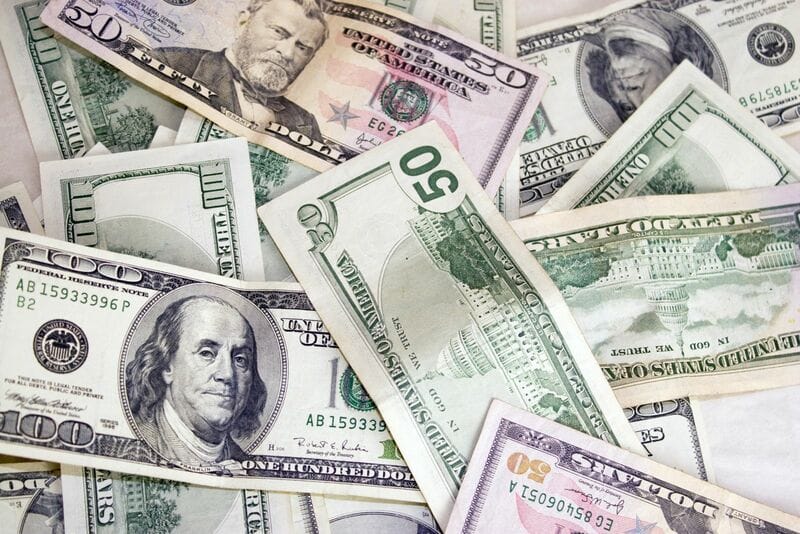
The dollar index (DXY00) on Thursday fell by -0.09% on weaker-than-expected U.S. Philadelphia Fed, existing home sales, and leading indicators reports. Also, signs of weakness in the U.S. labor market undercut the dollar when weekly initial unemployment claims rose more than expected. However, the dollar recovered most of its losses on hawkish comments from Cleveland Fed President Mester that sparked some short covering.
Thursday’s U.S. economic news was weaker-than-expected and bearish for the dollar. The Apr Philadelphia Fed business outlook survey unexpectedly fell -8.1 to a nearly 3-year low of -31.3, weaker than expectations of an increase to -19.3. Also, Mar existing home sales fell -2.4% m/m to 4.44 million, weaker than expectations of 4.50 million. In addition, Mar leading indicators fell -1.2% m/m, weaker than expectations of -0.7% m/m and the biggest decline in 2-3/4 years.
Weakness in the U.S. labor market is bearish for the dollar after weekly initial unemployment claims rose +5,000 to 245,000, showing a weaker labor market than expectations of 240,000. Also, Weekly continuing claims rose +61,000 to a 16-month high of 1.865 million, showing a weaker labor market than expectations of 1.825 million.
Thursday’s comments from Cleveland Fed President Mester were hawkish for Fed policy and supportive of the dollar when she said, "I anticipate that monetary policy will need to move somewhat further into restrictive territory this year, with the fed funds rate moving above 5% and the real fed funds rate staying in positive territory for some time."
EUR/USD (^EURUSD) on Thursday rose by +0.02%. The euro Thursday posted modest gains. Hawkish comments Thursday from ECB Governing Council member Knot gave EUR/USD a boost when he said the ECB might have to raise interest rates again in June and July following next month's hike. However, the euro fell back from its best levels after the dollar rebounded on hawkish Fed comments.
Thursday’s Eurozone economic news was mixed for EUR/USD. On the positive side, the Eurozone Apr consumer confidence indicator rose +1.6 to a 14-month high of -17.5, stronger than expectations of -18.5. Conversely, German Mar PPI eased to +7.5% y/y from +15.8% y/y in Feb, weaker than expectations of +9.8% y/y and the weakest report in 1-3/4 years.
ECB Governing Council member Knot said, "It's too early to talk about a rate pause," and the ECB may have to raise interest rates again in June and July following next month's hike.
USD/JPY (^USDJPY) on Thursday fell by -0.29%. The yen Thursday posted moderate gains, supported by falling T-note yields. Also, Thursday’s trade news showed Japan’s Mar exports rose more than expected, a bullish factor for the yen.
The Japan Feb tertiary industry index rose +0.7% m/m, stronger than expectations of +0.4% m/m.
Japan Mar exports rose +4.3% y/y, stronger than expectations of +2.4% y/y. Mar imports rose +7.3% y/y, weaker than expectations of +11.6% y/y.
June gold (GCM3) on Thursday closed up +11.80 (+0.59%), and May silver (SIK23) closed up +0.002 (+0.01%). Precious metals Thursday closed higher. A weaker dollar Thursday supported gains in metals. Also, a decline in global bond yields was supportive of metals. However, gains in gold were limited after German Mar PPI rose less than expected, easing inflation concerns. In addition, hawkish central bank comments Thursday weighed on metals. ECB Governing Council member Knot said the ECB might have to raise interest rates again in June and July following next month's hike. Also, Cleveland Fed President Mester said, "I anticipate that monetary policy will need to move somewhat further into restrictive territory this year.”
On the date of publication, Rich Asplund did not have (either directly or indirectly) positions in any of the securities mentioned in this article. All information and data in this article is solely for informational purposes. For more information please view the Barchart Disclosure Policy here.






